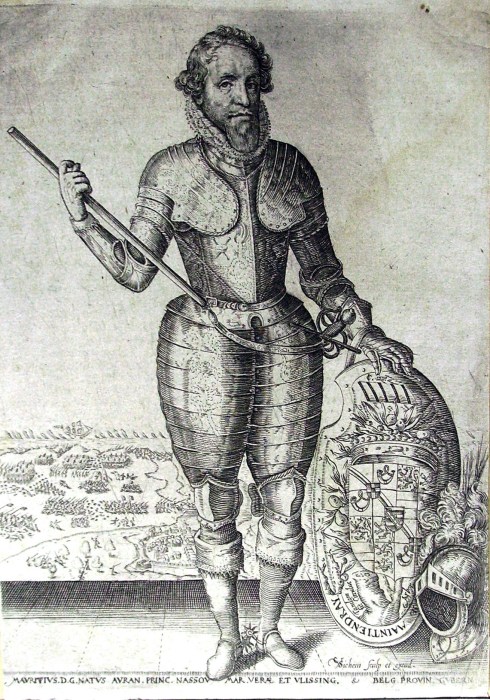The Pilgrim migration can be viewed as an aspect of the major changes in church and state throughout Europe which we know as the Renaissance and Reformation and the beginnings of colonialism. The urge to return to an ideal form of the Christian church in conformity with what is described in the New Testament arose from a critical reading of ancient texts which characterized other fields of scholarly enquiry at the time as well. Similar study of the Bible had inspired Martin Luther, Menno Simons,and John Calvin. The state Church of England rejected by the Pilgrims was, however, part of a much larger movement opposed to the religious dominance of Rome and the political dominance of the Catholic Hapsburg Empire, which had included Germany, Austria, Spain, parts of Italy, and the Low Countries.

When the leader of the Dutch revolt against the Hapsburgs, Prince William of Orange, was assassinated in 1584, Queen Elizabeth I of England promised soldiers and other assistance to the Dutch; and the Earl of Leicester became Governor General of The Netherlands in 1585-1586. All the English garrisons of the army accompanying Leicester, in towns throughout The Netherlands, were provided with English ministers. Leicester, sympathetic to the Calvinist Puritans in the Church of England, caused Genevan Calvinist church organizational forms to be adopted at a Dutch Reformed Synod in The Hague, reversing an earlier organizational system in which local magistrates had more to say about choice of ministers and control of local church affairs. When Leicester resigned in 1588 he was succeeded by Prince Maurits of Orange-Nassau (a son of William of Orange), who became Stadholder and General.
The magistrates set aside the Genevan church polity, displeasing the many strict Calvinist Walloon and Flemish immigrants, who were streaming to the north after the Catholic capture of Antwerp and other Protestant towns in the south in 1584. The war, with massive English participation, continued until a twelve-years' truce began in 1609. This truce was advantageous to Dutch trade in Europe and contributed to expansion of Dutch colonial activities in the East Indies, Africa, and the West Indies, including North America. As commercial rivals, Spain and The Netherlands continued the exploitation of the labor of native populations outside Europe which had begun a century earlier; and with England and Portugal they established colonial settlements in what to them was the New World, encouraging their own people to move there and taking advantage of existing African customs of slavery and slave trading to obtain workers for the West Indian colonies through forced migration.

In 1603 Queen Elizabeth of England was succeeded by King James I, who opposed the Puritans and further suppressed the Separatists. Although promising to support the anti-Hapsburg, anti-Catholic armies of the Reformed governments of Bohemia, The Palatinate, Hessia, and The Netherlands, he secretly favored at least limited collaboration with the Hapsburgs and after the expiration of the Twelve Years'Truce never sent the often negotiated financial and military aid. Nonetheless many British soldiers continued to serve in the Dutch army, paid directly by the Dutch. Many Dutch officials initially viewed the war with the Spanish in terms of preserving non-religious civil privileges to which the demand of religious toleration for Protestants as well as Catholics was added. Reasons for tolerant attitudes could be personal. For example, Burgomaster Pieter Adriaensz. van der Werff, hero of the Siege of Leiden (1573-1574), was the son of a Mennonite martyr, Adriaen Vermeer. Johan van der Does, military leader during the siege, and civic government official and university curator afterwards, was a close relative of the last active Abbess of Rijnsburg, who lived in Leiden with other Catholic nuns after the Reformation. She is buried in the Pieterskerk, which had already become a Reformed church.
The Pilgrim’s rich and exciting story deserves to be told in detail. You can discover different aspects of it in the following chapters.